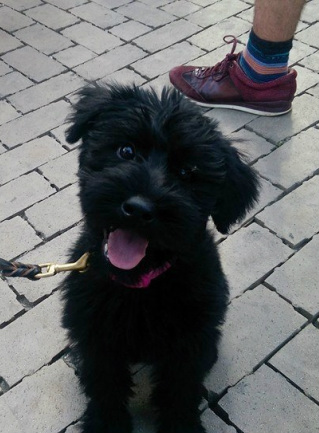 When most people have an interaction with dog trainers they aren't aware that the dog may be working at the time or have a different idea of how you should interact. Generally speaking when people run into me and a dog they will try to interact with the pup. Most people know the general things that will help like crouching or holding their hand out for an inspection but do you know how to maximize your interactions? I wanted to write this to help people who want a better connection with most dogs they meet.
Adam Madore
professional dog trainer with Artisan dog training Lexington / Nicholasville
1 Comment
Dogs are social animals that appreciate being understood as much as anyone so sometimes when we are baffled by our pets behavior we may need to look at the basics again. I have a lot of clients who come to me with no way to communicate with their dogs and feel like it's the fault of the dog or the clients blame themselves. Instead of blaming yourself you simply improve you communication and you will see results right away. I've decided to write down some of my favorite ways to increase communication and improve your skills with simple exercises.
Adam Madore
professional dog trainer with Artisan dog training Lexington / Nicholasville 3/5/2014 0 Comments To rescue or buy?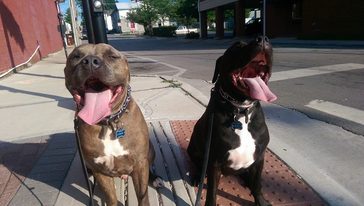 One of the things that makes America great is all the choices we have today. When buying a dog the sky is the limit. You can choose from color,breed, and even temperament. I am a huge advocate for dog ownership in any form but I would like to talk about the major differences and what to know. When selecting a purebred dog you will run into many complications and these can really affect what kind of dog you get. Starting with general ideas you will have two basic differences in every breed. Working line and show line. Working line dogs are built to be strong tenacious and intelligent. Show lines are meant to be she epitome of the breed in all conformation(looks). Knowing your breed and the inherent illnesses that the breed is affected with can also change your mind. I usually choose working lines because of my profession, but that is not always what you may read about the breed. A good example is the dachshund. They are great with kids and very sweet but some working lines are very energetic and can wear down most children even. I could expand upon this subject for days but we will move on. For questions about your breed feel free to contact me. Show lines are usually very good examples of the breed and fit the descriptions. If you decide to get a rescue dog from a shelter or an organization you should still do your homework. Start by having a good generalization in mind. Big,small, calm, or ,excited. Stick to the plan and take your time. Most of the shelters are going to have plenty to choose from and they are always a good bargain. Adam Madore
professional dog trainer with Artisan dog training Lexington / Nicholasville 3/5/2014 0 Comments Anthropomorphizing Thinking your dog is human. Sometimes people attribute things to dogs that aren't fair , you may think that your dog is sad or happy nervous or content while the dog may not be feeling that way. Essentially dogs can't be thought of in human terms especially because it doesn't apply to them in many things. Dogs don't necessarily get jealous but they are motivated to protect resources and this is one of many examples of things that I have found when people are anthropomorphizing. The ten dollar word means giving an animal human characteristics that cannot apply. Next time you think that your dog just has a temper or that they won't listen a lot then maybe you should consult a dog trainer to find out what the motivation is behind your perceived issue and why they may be present. This is why I give free consultations, most people can struggle with being a new dog owner or they try to apply cut and paste training that gets them no results. Before you can help your dog you first need to learn to communicate with them. Adam Madore
professional dog trainer with Artisan dog training Lexington / Nicholasville 3/5/2014 0 Comments Common Neutering Myths
Adam Madore
professional dog trainer with Artisan dog training Lexington / Nicholasville 7/3/2013 3 Comments Socializing your puppy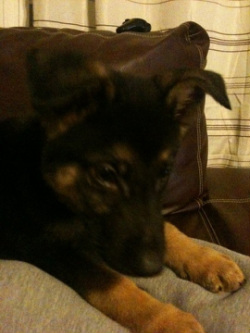 While I was studying to be a dog trainer I learned extensively about socializing dogs. I can't convey the large amount of knowledge here in a short blog post or even in a single lesson. What I will be covering today is summary of some things and a condensed version of others. If your raising a puppy for a certain job you will need to contact me directly or put it on my facebook page. Socializing your dog is generally speaking taking your dog out and exposing him or her to variable scenarios. Introducing new things and experiences in order to amplify your dogs confidence and help them develop without fear of the world around them. Some of you worry about what may happen when you are socializing your puppy. The most common fear is will they come down with some random malady. When your puppy has not finished its round of shots you do have to protect them or they certainly can come down with something possibly fatal. The benefits to your puppy Vastly outweigh the negatives in my eyes because of the amount of control that you can exert over them when they are going somewhere. When a puppy grows from 8 weeks to 12 weeks the puppy isn't really afraid of anything and it would take a rather extreme issue in most puppies minds in order for them to become wary of something. After this short window they will begin to become suspicious of things, people, or other animals. When your choosing places to take your new furry friend remember that they can become overloaded and stressed. If you take them somewhere that is busy or chaotic then they will have a shorter amount of time to take it all in before they need to leave or could become too overloaded and create stress issues. Signs of stress are a puppy licking their lips repeatedly or yawning. More obvious ones like shaking or cowering could present themselves too but don't swoop in right away and evacuate with your puppy just give them a moment to recover. If you are going around other dogs you should be mindful of the other dog and be cautious. Be certain that they do not touch lots of random dogs and puppies. DO NOT TAKE THEM TO DOG PARKS. When you expose a puppy to the dog park they have a Far greater chance to get sick. Many people don't have vaccinations on their dogs or they are not up to date and could harm your puppy. If your puppy is small enough then carrying them around and letting people pet them is a good idea and I be sure to watch my facebook page to find out about things going on in your area that your dog and you would want to do. Adam Madore
professional dog trainer with Artisan dog training Lexington / Nicholasville 8/9/2012 1 Comment Spay or Neuter?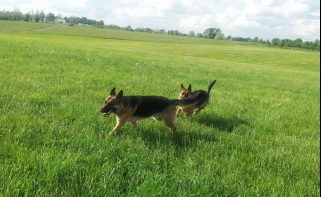 Let me start off by saying I am not against spaying or neutering. 5 Million pets a year are entered into shelters. To spay a female can reduce the amount of pets exponentially. I have been asked by most of my customers if they should spay or neuter and most of the time we are talking about puppies or very young dogs. This is where I differ somewhat from mainstream. I would prefer to wait for a male to be past 7 months for a normal breed or one year for a giant breed. Females should be spayed just before their first heat to make the surgery easier. The reason I feel this way is because dogs need to grow as much as possible before you shut off the hormone supply. Many people would regret getting the surgery too early if they knew the dog wouldn't grow to full potential. Myths surrounding these procedures are that they will stop certain behaviors or calm down. Dogs will only change with training or experience. You cannot give a dog a random chemical and expect it to stop peeing. The same goes for removing one. The reason to spay or neuter is only to control pet population. No other reason is valid. If you have any questions or concerns feel free to ask. Adam Madore
professional dog trainer with Artisan dog training Lexington / Nicholasville 7/28/2012 0 Comments Training methods I have a lot of people who talk to me about trainig and were filled with information about training and didn't know what they had started on or how to cotinue. This post today will outline the different styles of training and the limtations as well as the strengths and a few terms. Training dog in America was originally marked by military dog trainers and in particular William Kholer. On the other side of the beginning of a different do training style we have Marian and Keller Breland. Kholer was a great dog trainer and he employed the use of choke chains and leashes as the foundation of his training. His book can be found under The Kholer Method of dog training and is still the cornerstone of military style of training. The Brelands used treats and clickers to train animals. They studied under B.F.Skinner and later started a school called Animal Behaviour Enterprises in wich they trained chickens to ensure that people understood their method and how to use it for dogs. This is some of the origins for stryles used at places such as BigBoxSmart. Training has taken some very important people on both sides that shaped it into what it is now. Barbara Woodhouse and Karen Pryor to name a few. They either ran paralell to or explained more in depth earlier ideas. Prong or pinch collars are a tool that has since replaced the choke chain just as manufactured treats have replaced raw meat originally used in treat training. Positive reinforcement is now the term used for treat training and Operant conditioning is usally used for leash and collar. A third type of training has been in use for many years called modeling and it will also be explained breifly but retains it's earlier name. First I will explain the limitaions. These do not apply to every dog or every person. When you are using Positive reinforcement you will never tell a dog no or withhold from the dog anything. You will mark a behaviour as only positive and wait out the negative. Without being extremely dedicated this method can get pretty hairy on its own as the owner has to really understand the nuances to make a behavior end. Also it can take your dog a very long time to advance. Operant conditioning is limited to only controlling your animal with a leash and collar or electric collar and never off leash or without stimulation. This leads people to rely too heavily on the collar for all of their communications with the dog and can be hard on a dog without proper use. Modeling is using your hands to "sculpt" a dog into position repeatedly while telling them the command and holding them there. This method can take a very long time and will be very hard to use on a dog that is excitable. The positives are just as varied. Modleing allows you to put a dog in extraordinary positions wich they will hold for as long as you will tell them. A classic example is Lassie. Positive reinforcement allows you to teach a dog to think through problems and can lead to fantastic tricks in a very short time. An example would be Eddie on Frazier. Operant conditioning allows you to start control of a dog when you first begin training and shows immediate results. A famous example is Rin Tin Tin. I use any form of training a customer wants but if I reach a limitation and need to I can switch tactics or blend them together. As always let me know if you have any questions and I will be glad to answer them. Adam Madore
professional dog trainer with Artisan dog training Lexington / Nicholasville 7/6/2012 1 Comment Breed Types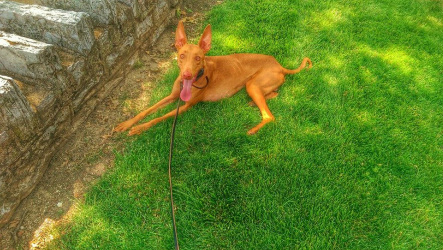 Early on I spoke about choosing your dog or puppy. Today I would like to touch on some breed characteristics. Breed characteristics separate your dogs natural tendencies from another breed. In general the breed will be first categorized by the secondary name such as hound or shepherd. Any dog will then be separated by line or type, generally working or show line. Many dogs that you buy may be very hard to handle and typically a working line dog has a little more energy. Breed characteristics as they pertain to this article are all the working version because the show line may have the characteristics bred out or low to typify the dog's look rather than temperament. To be sure you get the right dog please check the list below for a touchstone of the type of attitude your dog may present. Hounds are usually very vocal and like to play but are aloof to owners. Shepherds can be very protective and astute. This also applies to any cattle or sheepdog. They are very loving also. Terriers usually will be thought of as lap dogs and can be aloof. They love to play and learn and will chase a lot. Working dogs (general) to this category I apply the rottweiler and the husky etc. They are usually very good working dogs and are meant to pull. They also can span the range of needy to aloof but most will like to play. I told you in the beginning that these are generalities but if you would like more specific info about a certain breed just call and I will tell you what I know! Adam Madore
professional dog trainer with Artisan dog training Lexington / Nicholasville 6/3/2012 0 Comments The most important dog command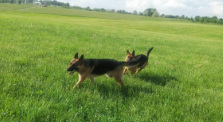 Today I want to talk about your dog running away. If your dog runs from you it could be a serious problem. Dogs who run from their owner can be a danger to drivers and the owner as well as themselves. Training a recall is the most common way to fix the issue but I have a few tips that can help you keep sane from the start. When you first bring a puppy home they follow you automatically. You should encourage this and use it to train the puppy to follow you. When this puppy grows up this will still remain as long as you ensure that they are rewarded and never scolded. Remember to never correct a puppy for good behaviour and try not correct a puppy for the first five months. Try to solve your issues with positive reinforcement. If you leave your dog outside in a fenced yard you may think that they get enough excercise, but they are confined. If you are going to have an outside dog you should start working towards them staying on the porch so you can find them and they aren't running away later. Place a food bowl on your patio or deck when you first place your puppy outside. Place a small handful of food in the bowl every few minutes and the puppy will stay near the porch to check the bowl. I also use this method when I'm going in and out of the house and the puppy is lounging in the sun. If you have a grown dog who is running away then your problem has already been created and you should begin obedience training with emphasis on the recall. Obedience training gives you just that.. Obedience. If your dog is trained properly than they will be burning enough energy in a positive way and will come straight away when called. Last but not least is the electric fence or underground containment system. Many people may shy away from these containment systems but I would rather have a living dog who has been corrected over the alternative any day. When you use an inground or wireless pet system you should always take the time to properly train the dog to the system or the dog may become fearful of the yard itself. Training gives you communication anyway so use that communication for your dogs well-being and mental health. The systems come with a video that explains in-depth or ask your trainer to help. Good luck and be sure to excersize your dog. This is the top reasons I see dogs that run away. Because theyre bored and need to burn off some excess energy. Not because they are late for an appointment. Adam Madore
professional dog trainer with Artisan dog training Lexington / Nicholasville |
AuthorAdam Madore is a dog trainer with a passion for training and dogs in general. Archives
July 2014
CategoriesAll Aggressive Dogs Anxiety Chewing Contest Dog Training Drawing Faq Feeding Food Free General Obedience General Tips Gift Card Potty Training Puppy Seperation Socialization |
Search by typing & pressing enter


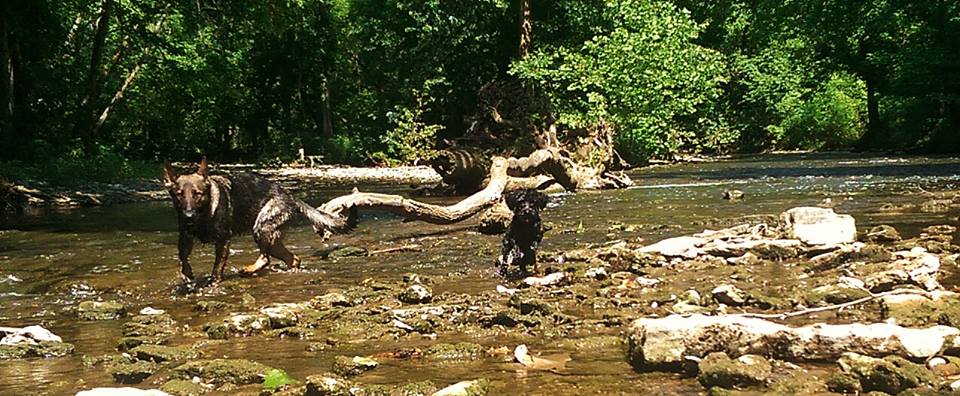
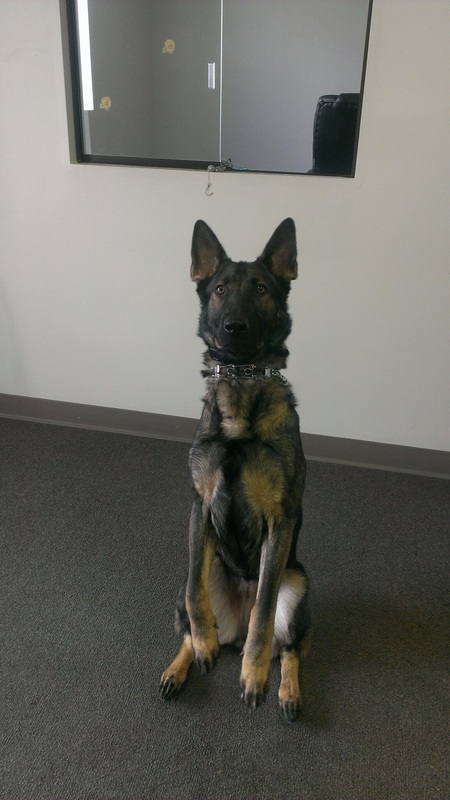
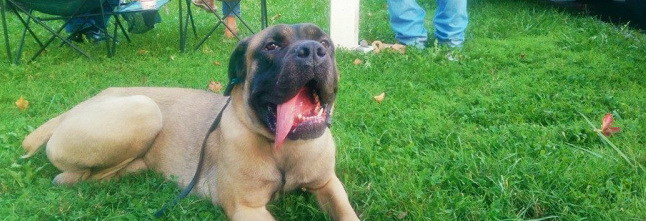
 RSS Feed
RSS Feed
